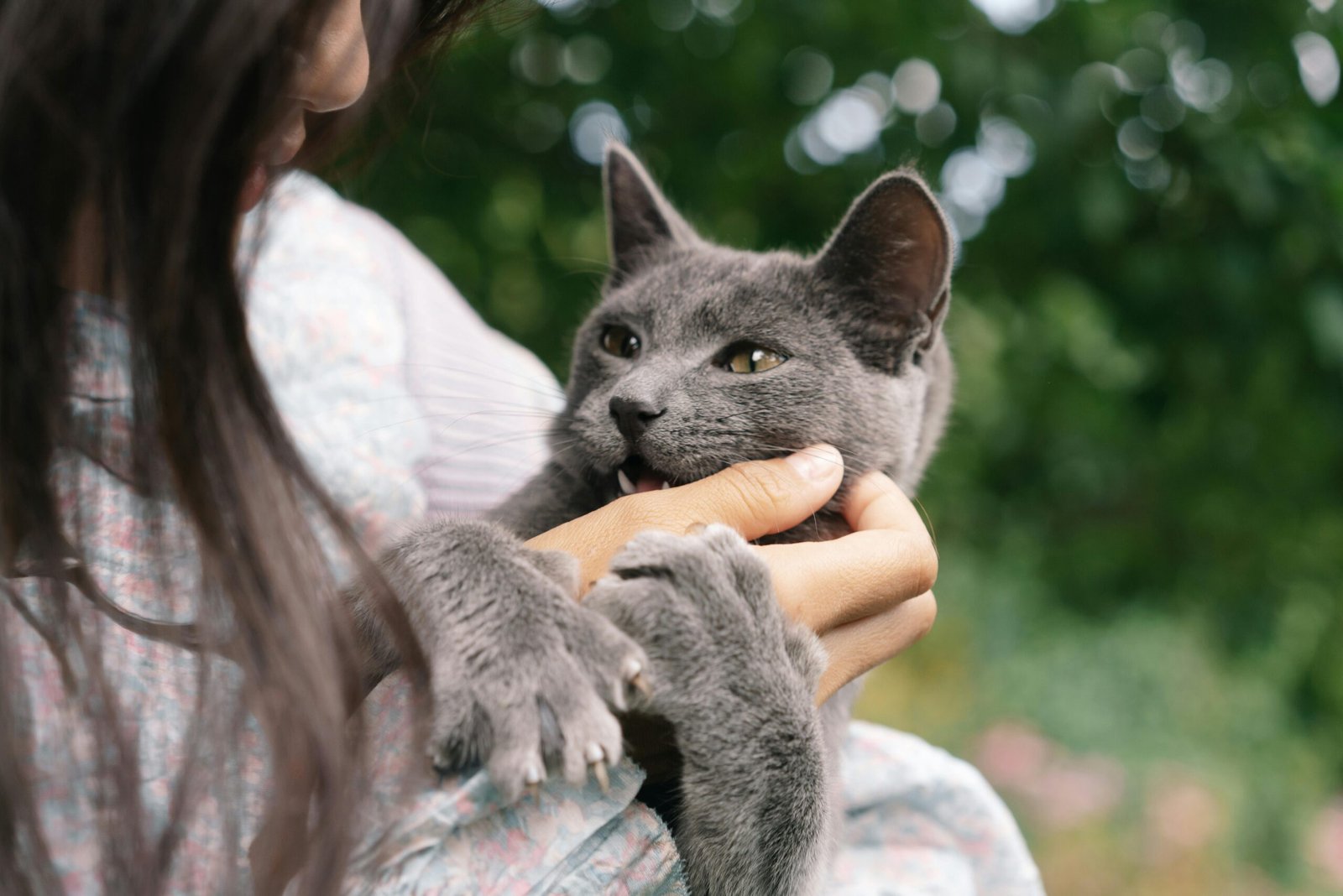Cats are beloved pets known for their independent yet affectionate nature. However, many cat owners experience a common and perplexing behavior: their cat bites them while being petted. This can be confusing and painful, leaving many wondering why this happens. Understanding the reasons behind this behavior is crucial for fostering a better relationship with your feline friend. This article will explore the various causes of cat biting during petting, how to recognize the signs, and effective strategies to prevent it.
Understanding Cat Behavior
Cat Communication
Cats communicate in various ways, including through body language, vocalizations, and behavior. Biting can be a form of communication, signaling discomfort, pain, or overstimulation. Understanding your cat’s unique communication methods can help you identify the reasons behind their biting behavior.
The Role of Instincts
Cats are natural predators with instincts that influence their behavior. Even domesticated cats retain these instincts, manifesting in ways that might seem odd or aggressive to humans. Recognizing these instinctual behaviors can explain why your cat might bite while being petted.
Reasons Cats Bite While Petting
Overstimulation
One of the most common reasons cats bite during petting is overstimulation. Cats have a threshold for how much petting they can tolerate. Once this limit is reached, they may bite to indicate enough.
Sensitive Areas
Cats have sensitive areas where they may not like to be touched, such as the base of the tail, belly, or paws. Petting these areas might provoke a defensive reaction, leading to a bite.
Play Aggression
Sometimes, what seems like a bite during petting might be play aggression. Cats often use their mouths and claws during play and may not fully understand the difference between play and aggression.
Medical Issues
Medical issues can also cause a cat to bite when petted. Pain or discomfort from arthritis, dental problems, or skin issues can make a cat more likely to bite.
Redirected Aggression
Redirected aggression occurs when a cat is agitated by something else and redirects that aggression toward the person petting it. This can happen if a cat sees another animal outside or hears a loud noise.
Recognizing the Signs
Body Language
Cats use body language to communicate their feelings. Signs of agitation include dilated pupils, flattened ears, and a twitching tail. Recognizing these signs can help you stop petting before your cat resorts to biting.
Vocalizations
Cats may vocalize their discomfort through growls, hisses, or low-pitched meows. Attention to these vocal cues can provide early warning signs that your cat is becoming overstimulated.
Tail Movements
A cat’s tail can be very expressive. A rapidly twitching or thumping tail often indicates irritation or agitation. If you notice these movements, it’s a good idea to stop petting.
Cat’s Pupils
If a cat’s pupils are dilated and looks nervous or scared, that is your sign to stop petting it. It will most likely attract you!


Preventing Cat Biting
Gradual Desensitization
Gradual desensitization involves slowly increasing your cat’s tolerance to petting. Start with short petting sessions and gradually increase the duration as your cat becomes more comfortable.
Positive Reinforcement
Use positive reinforcement techniques to reward your cat for good behavior. Treats, praise, and pets in their preferred areas can help reinforce positive associations with being petted.
Proper Play Techniques
Ensure your cat has plenty of play opportunities that allow them to express their natural hunting instincts. Using toys instead of hands can prevent play aggression from turning into biting.
Regular Vet Check-Ups
Regular veterinary check-ups can help identify any medical issues that might be causing your cat to bite. Addressing health problems can reduce discomfort and improve your cat’s overall behavior.
Managing Biting Incidents
Staying Calm
If your cat bites you, it’s important to stay calm. Reacting aggressively or loudly can escalate the situation and make your cat more fearful or aggressive.
Disengaging Safely
Disengage safely by gently removing your hand and giving your cat space. Avoid sudden movements that might startle your cat further.
Redirecting Attention
Redirect your cat’s attention to a toy or another activity. This can help shift their focus from the biting incident to something more positive.
When to Seek Professional Help
Behavioral Consultants
If your cat’s biting behavior persists despite your efforts, consulting a professional animal behaviorist might be helpful. They can provide personalized strategies to address the issue.
Veterinary Behaviorists
Veterinary behaviorists are veterinarians with specialized training in animal behavior. They can help diagnose and treat behavioral issues contributing to your cat’s biting.

Leave a Reply